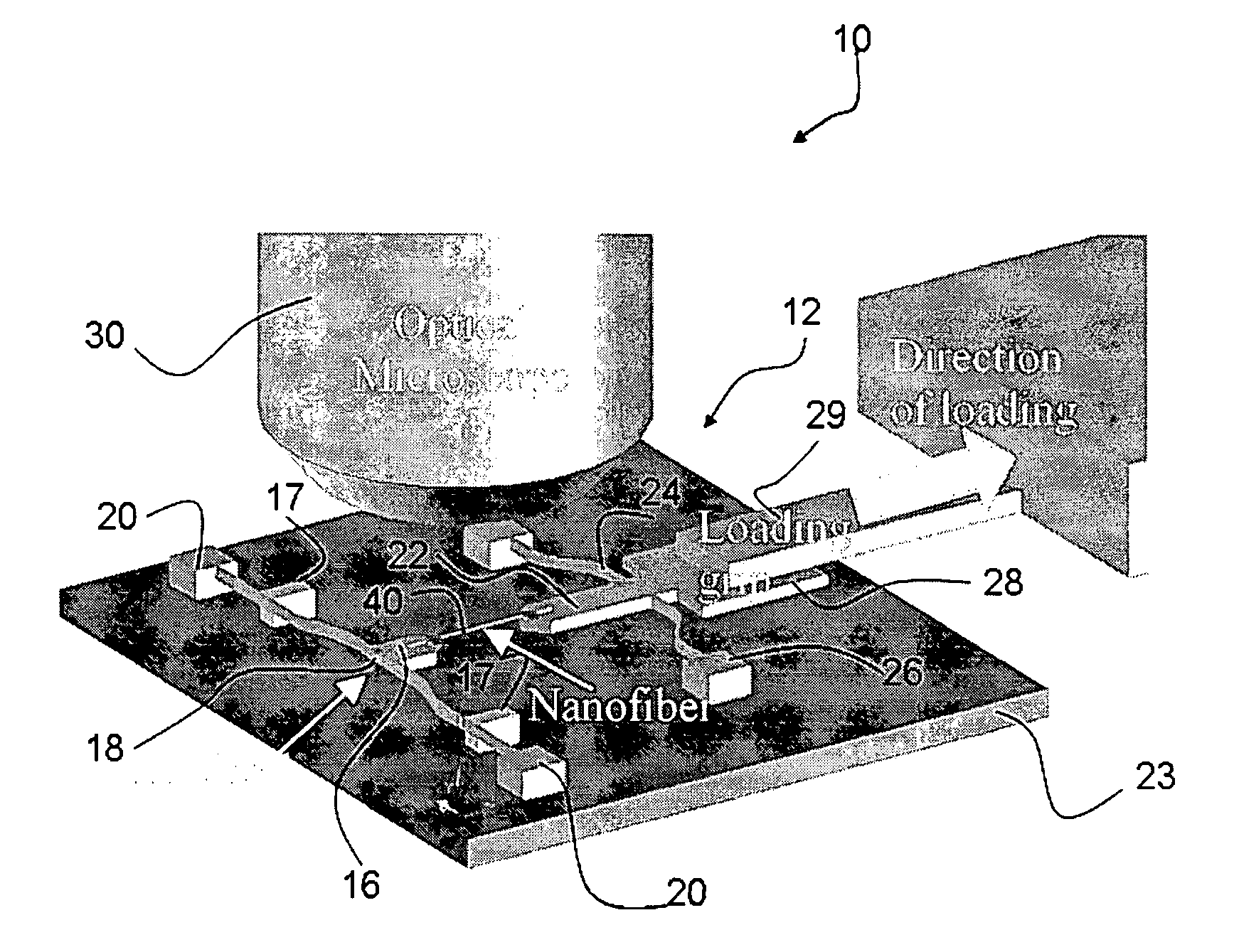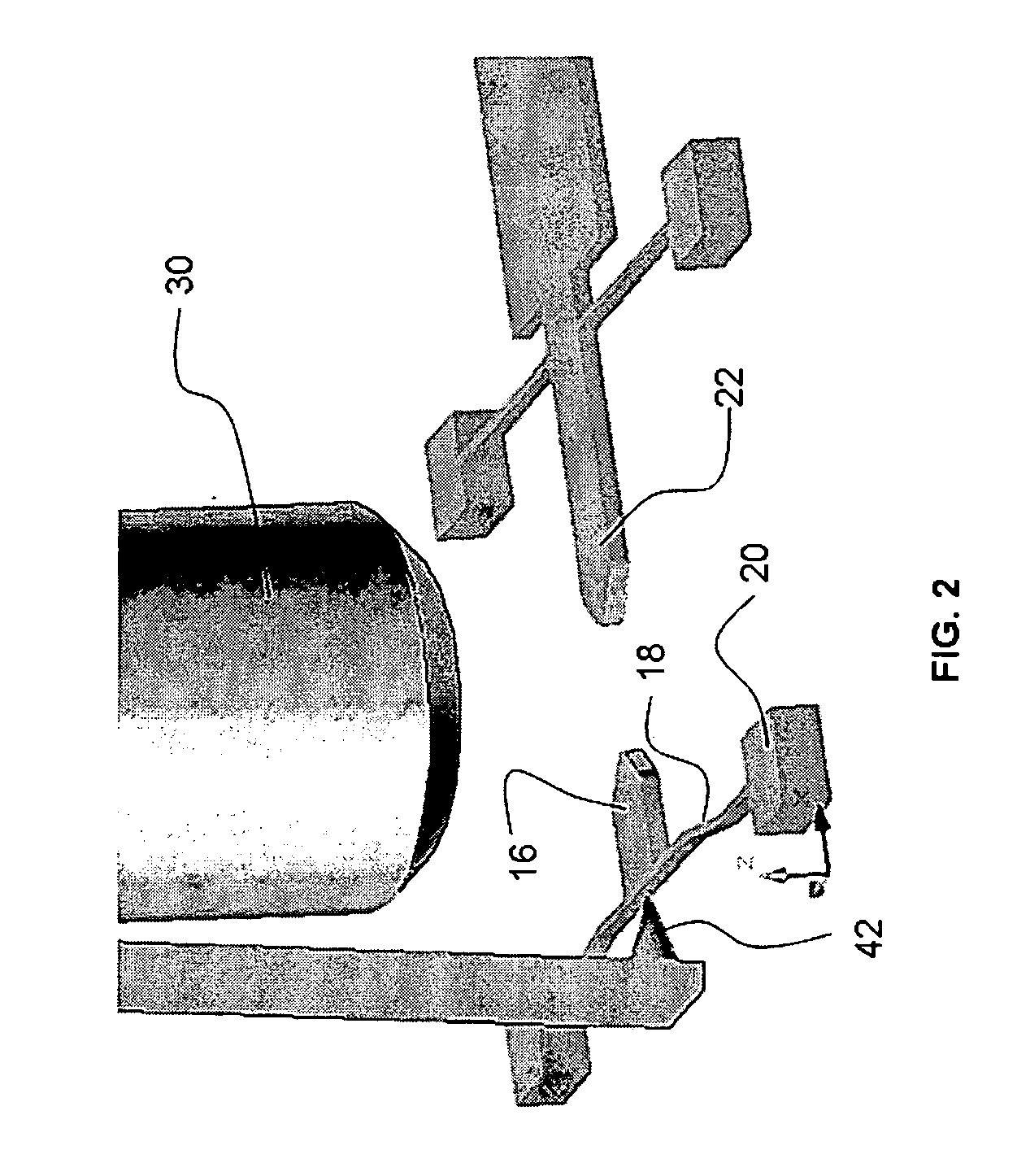Stress micro mechanical test cell, device, system and methods
a micro-mechanical test cell and micro-cell technology, applied in the field of nanofiber testing and micro-devices, can solve the problems of not being able to meet the standards of testing and materials, not being able to test the mechanical properties of nanofibers, and lacking practical testing methods and apparatuses that fit within the nanofiber manufacturing schem
- Summary
- Abstract
- Description
- Claims
- Application Information
AI Technical Summary
Problems solved by technology
Method used
Image
Examples
Embodiment Construction
[0020]The invention provides micromechanical test cell, test system and testing methods. Embodiments of the invention are useful, for example for testing mechanical properties and adhesion testing of single nano- and micro-fibers at various loading rates, as well as for testing of nanowires and nanotubes.
[0021]An embodiment of the invention is a system for testing. The system includes a test cell in the form of a stress micro device formed by MEMS fabrication. The test cell is configured to apply stress to a nano- or micro-fiber, tube or wire. The motion of substantial portions of surfaces of the stress micro device is captured by an optical microscope with a high magnification objective in combination and analyzed with a digital image correlation algorithm. Data acquired during testing are analyzed to provide mechanical properties and / or adhesion properties of the elongated nano- or micro-sample being tested.
[0022]A test cell of the invention is useful for measuring stress and stra...
PUM
| Property | Measurement | Unit |
|---|---|---|
| Stiffness | aaaaa | aaaaa |
| Stress optical coefficient | aaaaa | aaaaa |
Abstract
Description
Claims
Application Information
 Login to View More
Login to View More - R&D
- Intellectual Property
- Life Sciences
- Materials
- Tech Scout
- Unparalleled Data Quality
- Higher Quality Content
- 60% Fewer Hallucinations
Browse by: Latest US Patents, China's latest patents, Technical Efficacy Thesaurus, Application Domain, Technology Topic, Popular Technical Reports.
© 2025 PatSnap. All rights reserved.Legal|Privacy policy|Modern Slavery Act Transparency Statement|Sitemap|About US| Contact US: help@patsnap.com



